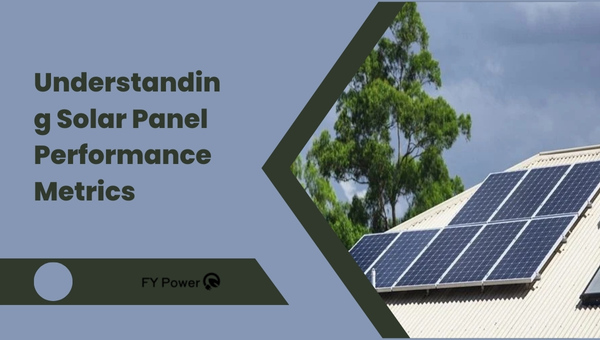Hello there! Ever wondered how to verify your solar panel performance? I guess I heard a yes. Just as there are different ways to test the strength of a signal or the quality of a dish, there are methods to assess your solar panel performance. It’s crucial – just like getting annual health checkups to ensure you’re in a good state.
So, how can one perform these tests? It’s nothing technical. By checking output, wattage, and amps you can masterfully evaluate solar panels’ efficiency. These assessments grant you basic knowledge about their energy production capacity and aid in early detection troubleshooting issues for that beastly green power in your backyard!
What You’ll Learn Here
- Methods of testing solar panel performance accurately
- Deciphering resulting data metrics effectively
- Essential equipment needed for carrying out these tests
- Steps towards improving your overall effective use of sun power through understanding tests results
Understanding Solar Panel Performance Metrics
Understanding solar panel performance metrics is crucial for evaluating their efficiency and output. Key metrics include the capacity rating measured in watts (W), which indicates the maximum output under ideal conditions. The energy conversion efficiency percentage reveals how much sunlight is converted into usable electricity.

Performance under standard test conditions (STC) versus actual operating conditions can also vary, impacting real-world energy production. Monitoring these metrics is mandatory for optimal system sizing and return on investment.
The Role of Output, Wattage, and Amps in Solar Panel Efficiency
When it comes to solar panel performance, there are three key numbers I always look at output, wattage, and amps. These things tell me how well a solar panel works. Let me break these down:
- Output talks about the energy the panel makes over time. It’s like counting how many apples fall from a tree each day.
- Wattage is all about power right now. Think of it as how strong a punch is – boom!
- Amps show the flow of electric juice – kind of like how much water flows through a hose.
Together, these tell me if a solar panel is doing its job or just sitting pretty on the roof.
Also Read Ecosia Default Search Engine: Easy, Eco-Friendly Setting!
Test 1. Verifying Solar Panel Performance with a Multimeter
Verifying solar panel performance with a multimeter is mandatory for system maintenance and troubleshooting. By measuring voltage and current, a multimeter assesses a panel’s electrical output.
The readings help ensure panels operate efficiently and identify potential issues, such as shading or degradation. Regular checks contribute to maintaining optimal energy yield and system reliability.
Equipping for Accurate Readings
The right tools make things easier, just like using the proper knife to cut bread! Here’s what I grab when I’m ready to test with a multimeter:
- A good quality multimeter – it’s the measuring tape of electricity.
- Set of leads that come with your multimeter – they’re my electric feelers.
- Maybe some crocodile clips to hold those leads in place – because nobody likes holding wires forever!
- A sunny day or bright light source – no sun means no power to measure.
Step-by-step Guide to Using Multimeters on Solar Panels
Be safe! Electricity isn’t something to mess around with, so here’s how I go step by step:
- Set my multimeter dial to the right setting – usually volts (V) for voltage check and amps (A) for current check.
- Connect those test leads: red goes to positive (+), and black sticks to negative (-).
- Real gentle-like, put those probes onto your solar panel’s connectors.
- For voltage (that’s your open-circuit voltage), make sure nothing’s using power from the panels.
- To check current (that’s short-circuit current), look carefully at the numbers while everything’s still connected.
Remember not to rush; precise movements mean accurate measurements!
Interpreting Multimeter Readings for Optimal Solar Panel Performance
Numbers don’t lie but making sense out of them can be tricky! Let me give you some pointers:
- Match whatever you see on that multimeter screen against what’s promised by your panels’ specs – it tells you if they’re keeping their promises.
- “Voltage” is high with no clouds blocking Mr Sun; if it dips lower than expected without shade or night coming along – we might have an issue.
- The current should stay steady; bouncing numbers means something could be funky somewhere in your setup.
Also Read: Who Makes WEN Generators And Where Are They Made?
Test 2. Measuring Ampere Output with Precision Using Clamp Meters
Clamp meters provide a convenient and precise way to measure amperes without interrupting the circuit. They feature a hinged jaw that clamps around a conductor, capturing the magnetic field to determine the current flow with high accuracy.
Essential for electricians, these tools offer a safe method for measuring high current levels in complex electrical systems, ensuring maintenance and troubleshooting processes are both efficient and effective.
Assembling the Right Tools for Current Measurement
Before I measure how well my solar panels are working, I need to get some tools ready. To check the amps properly, here is what I put together:
- Clamp Meter: This tool fits around a wire and tells me how much current is flowing through it.
- Solar Panel’s Manual: It shows me the numbers that my solar panels should hit.
- Safety Gloves: Keeping my hands safe from any electric danger is important.
- Protective Eyewear: Just like my hands, my eyes need to be safe too when I work with electricity.
These are just the basics to get started on testing amps.
Detailed Procedure for Measuring Solar Panel Amps
Now that I have all my tools, here’s how I check the amps:
- Put on safety gloves and eyewear.
- Open up the clamp meter and put it around one of the wires coming out of the solar panel.
- Make sure that the solar panel is facing direct sunlight without any shade covering it.
- Look at the clamp meter display and note down what number it shows.
Remember! Safety first, so don’t touch any other part of the meter or wire while measuring.
Analyzing Clamp Meter Data Against Maximum Power Ratings
Okay, now I have a number on my clamp meter screen but what does it mean? Here is what I do:
- Grab my solar panel manual and look for “max amps”.
- Compare that number with what’s on my clamp meter display.
- If they match or close – great! My panels work fine!
- If not, something might be wrong with them or maybe they’re just old.
Also Read: Ultimate Guide to Solar Power a 12V Fridge
Test 3. Tracking Electric Yield Through a Charge Controller
Charge controllers play a pivotal role in managing the electric yield from renewable sources, like solar panels, to batteries. By tracking the output and controlling the charge, they prevent overcharging and extend battery life.
This ensures a steady, regulated flow of power and optimizes the energy system’s efficiency, making them indispensable in off-grid and backup power applications.
Must-Have Items for Testing with a Charge Controller
To use a charge controller to test electric yield, make sure you have these items:
- Charge Controller: It manages how much power goes in and out of your batteries.
- Solar Panels: Of course!
- Batteries: Where your power gets stored for later use.
- Wires & Connectors: You need these to connect everything together neatly.
Stepwise Operation from Connection to Calculation
Let’s hook everything up and then do some math! Follow these steps carefully:
1 . Plug wires from your solar panels into the charge controller inputs.
2 . Connect battery cables from charge controller outputs to your batteries.
3 . Turn on everything – watch those lights flicker alive!
4 . Now read off your charge controller display; it shows voltage and current going into your batteries.
I then jot down these readings because this will help me calculate total power later on!
Insights Into Charge Controller’s Data Interpretation
Now let me think about those numbers from before…
1 . Voltage times Current equals Power – this basic formula gives us watts!
2 . Check your daily sunshine hours – multiply by watts; This gets daily watt-hours – energy per day!
By doing this little exercise each day, you learn quickly how good those sunny rays are turning into usable energy!
Also Read: 12V Battery Health Check: Uncover Your Battery’s Capacity
Test 4. Determining Wattage Efficiency with an In-line Watt Meter
An in-line watt meter is instrumental in assessing wattage efficiency for various electrical devices. By connecting directly to a circuit, it allows users to monitor real-time power consumption, measuring watts to ascertain energy usage and efficiency.
This tool is crucial for those looking to optimize energy use, reduce costs, and enhance the performance of their electrical systems.
Essential Equipment Checklist Before You Start Measuring
Get ready for serious measuring! You’ll need:
1 . In-Line Watt Meter: An awesome device that directly tells you how many watts you’re pulling in real time!
2 . Adapter Cables: To connect all parts without any fuss or hassle.
Now we’re fully geared up for checking wattage efficiency like pros do!
Hook-up Process from Batteries, Controllers, Meters, and Panels
Here’s putting energy pieces together tidily step by step:
1 . Make sure everything’s turned off – no sneaky currents flowing yet!
2 . Start by connecting adapter cables between batteries and in-line watt meter properly; snug fit no loose ends, please!
3 . Link this setup back to charge controllers – follow those instructions closely folks!
4. Finally wire up solar panels themselves last – take care here because the sunshine starts the electricity dance immediately!
Every connection counts towards getting true readings so taking time to double-check connections can make a huge difference trust me!
FAQs
What is meant by open-circuit voltage and short-circuit current?
Open-circuit voltage is the maximum voltage a solar panel can provide when not connected to an electrical circuit. Short-circuit current is the current that flows when the panel’s terminals are directly connected with no resistance in between.
How do environmental factors affect these tests?
Environmental factors like temperature, sunlight intensity, and shading can impact the results of these tests, as they directly influence solar panel efficiency and output.
Can someone without technical expertise perform these procedures?
Yes, with clear instructions and proper safety measures in place, a non-technical person can perform basic testing on solar panels. However, understanding the results may require some technical knowledge.
Conclusion
It’s clear that understanding and monitoring solar panel performance is at the core of maintaining an efficient renewable energy system. From assessing output, wattage, and amps to utilizing tools like multimeters and clamp meters, there’s a range of precise steps that ensure our solar panels are functioning optimally.
Moreover, the inclusion of charge controllers and in-line watt meters aid in the collection of valuable data tied to the energy efficiency puzzle. With these methods on hand, I’m confident in my ability to test solar panels effectively.
Key Takeaway Points
- Understand the metrics: output, wattage, and amps for monitoring panel health.
- Use multimeters for voltage and current readings.
- Employ clamp meters for accurate ampere measurement.
- Utilize charge controllers to track electric yield.
- Rely on in-line watt meters for determining actual wattage efficiency.

